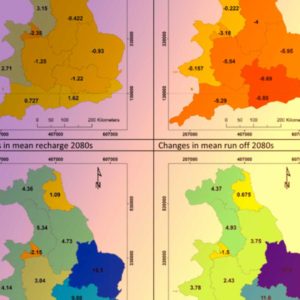Issue Date: August 2022

In 2021, SoBRA established a controlled waters and climate change subgroup to address the need to incorporate the effects of climate change into contaminated land risk assessments.
Climate change has the potential to significantly impact the predicted risks posed by land contamination in certain scenarios and whilst Cl:AIRE published a SUBR:IM bulletin on climate change, pollution linkages and brownfield regeneration back in 2007 there has not been any further published guidance for risk assessors in the UK on how to incorporate climate change considerations into controlled waters risk assessment over and above FAQ number 8 published in the Environment Agency’s Guiding Principles for Land Contamination (GPLC) Part 2 in 2010. SoBRA’s publication by the climate change and controlled waters sub-group sets out the current regulatory and guidance context, identifies current sources of authoritative information on climate change impacts for the UK, and sets out an approach for a qualitative appraisal of climate change impact at the Preliminary Risk Assessment stage, and a series of “What If” scenarios to be considered at GQRA. The report identifies the limitations that existing standard DQRA modelling software (such as RTM and ConSim) have when looking to model the short-term, transient nature of many climate change impacts, and recommends a series of steps to mitigate this in DQRAs.


